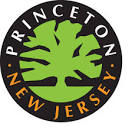By Philip Sean Curran, Staff Writer
As a boy living in Princeton, former Mayor Dick Woodbridge grew up in a town when there were more blue-collar jobs than there are today and the racial makeup of the town was different, too.
He and others on Wednesday at the Nassau Club listened to a lecture detailing how the once sleepy college community in central New Jersey has changed.
Princeton resident Ralph Widner studied housing, economic, demographic and other data about the community and how that compared to rest of the state and the nation. His work was contained in a report that he issued last year for Princeton Future, the local think tank where he sits on its board.
He looked closely at household income, where the average in Princeton is $178,542, more than double than the national average, in what is considered an affluent town. “Don’t trust averages, don’t trust medians, don’t trust incomes. They don’t tell you reality,” he said.
He scrutinized the data to find that the town’s low-income families are among the poorest in Mercer County.
“The bottom 20 percent of households in Princeton have a lower income than every other jurisdiction in Mercer County, except Trenton,” he said.
Still, he said 25 percent of all homes in Princeton are worth $1 million or more, compared to 3.3 percent statewide and 2.3 percent nationally.
He cited how many areas in the country that are thriving are centered around what he called “great research universities.” He said the Princeton-Trenton area ranks 10th nationally in terms of the concentration of residents with college degrees.
That has other ripple effects benefiting people without a college education. He said “the high salaries in these education/innovation hubs drives up the cost of living and, as a result, the compensation of the people who live there.”
In terms of workforce numbers, Mr. Widner said that of the 32,000 people who work in Princeton every day, about 23 percent are from town. The rest commute from someplace else.
“And that’s our traffic problem,” he said.
Princeton University, the town’s largest employer, has employees who come from as far as Connecticut and Delaware and everywhere in between, he said. The public school district and the municipality are the second and the third biggest employers, respectively.
In his talk, he also touched on Princeton’s demographics. He said the town is not as diverse “as we think we are.” For instance, college students account for 41 percent of all black residents in a town that once had a thriving black population.
Compared to the rest of New Jersey and the nation, Princeton has as a percentage of fewer blacks, at 5.4 percent, and Latinos at 8.4 percent, he said. Whites are the largest group at 69.3 percent.
“This town has changed dramatically demographically in the last 20 years,” he said.
He said the change was attributed to a large influx of Asians, who make up nearly 14 percent of the population.
Yet his research found in some ways a series of contrasting images: a college town where students make up 30 percent of the population, but also a place with more people over the age of 65 than the state or the nation.

